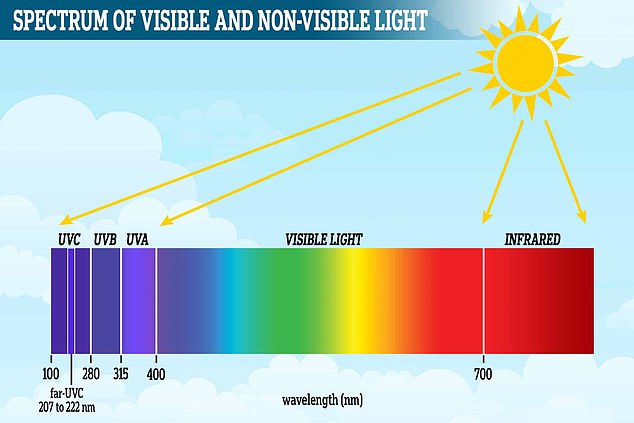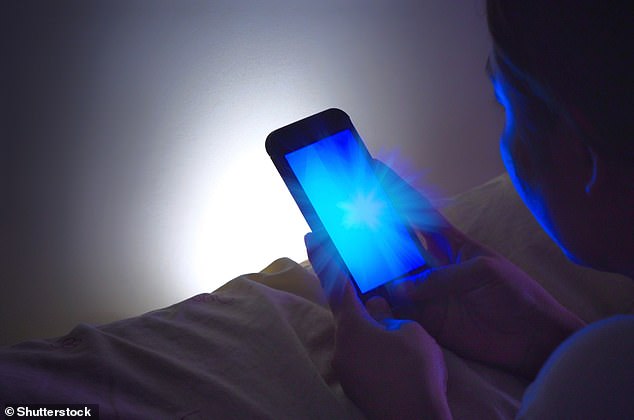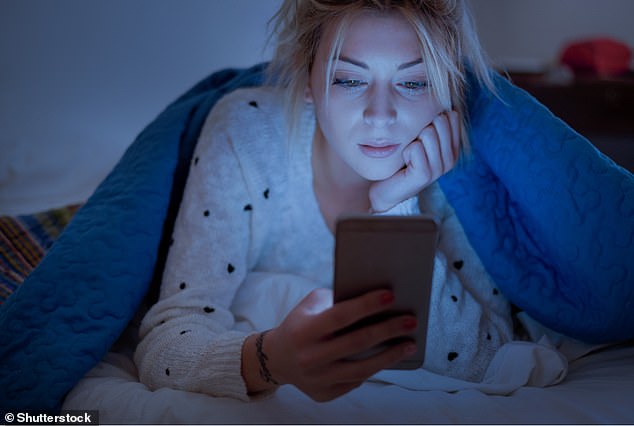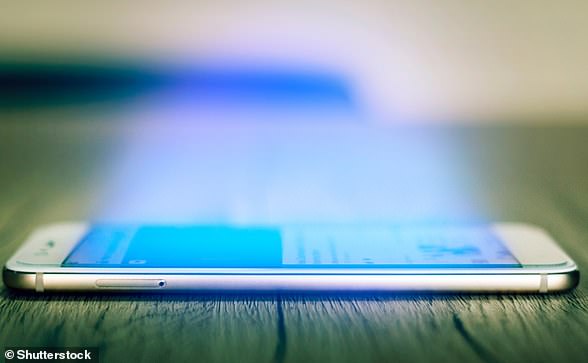We are often told by health experts not to look at our phone right before bed as it affects our sleep.
But according to a new study, there may not be much scientific basis for this.
Experts say there’s no decent evidence that exposing our eyes to “blue light” from a screen makes it harder to fall asleep.
This contradicts official advice from health experts, including the NHS, which recommends people avoid using their phone an hour before bed due to blue light.
Instead, researchers believe that smartphones interfere with sleep simply because we can’t put them down at night.
A new study casts doubt on NHS advice that blue light from screens delays sleep. Artificial sources of blue light include smartphones, tablets and computer screens, fluorescent light bulbs and LED televisions (file photo)
The new study was led by Dr. Michael Gradisar, clinical psychologist and sleep expert at Flinders University in Australia.
Dr. Gradisar conducted a review of 11 studies that investigated the link between smartphone light and sleep, but found no “significant” cause and effect.
“There is no evidence from 11 studies conducted around the world that screen light an hour before bedtime makes it more difficult to fall asleep,” he said. the times.
“If we take a step back and look at all the factors that can be detrimental to our sleep, screens are overrated.”
One of the 11 most compelling studies, conducted about a decade ago, found that using screens before bed delayed sleep by 10 minutes.
Dr. Gradisar added: “You have to ask yourself: does ten minutes really make a difference?”
It’s true that the screens of phones and other devices emit blue light, a color in the visible light spectrum that can be seen by the human eye.
It is commonly thought that blue light suppresses the body’s release of melatonin, a hormone that makes us sleepy.
Because of this, the NHS suggests “avoiding device use at least 1 hour before bedtime” for people who want a good night’s sleep.

Blue light is a color in the visible light spectrum that can be seen by the human eye. The spectrum of visible and non-visible light is shown here.

If light activates the same pathway in humans as in mice, this could explain why excessive exposure to light at night is associated with depressive symptoms.
The NHS says: “This includes mobile phones, tablets and televisions, as the devices can emit blue light that keeps us awake by altering melatonin in the brain.”
It is unclear whether Dr. Gradisar supports the effect of blue light on melatonin levels.
But the main reason phones interfere with sleep is that we can’t put them down, he maintains, adding that checking email right before bed is a “really bad idea.”
Professor Russell Foster, professor of circadian neuroscience at the University of Oxford, echoes this claim and agrees that “there is no evidence that blue lights from screens have any significant impact.”
Professor Foster previously told MailOnline: ‘The amount of light you get from screens is relatively low.
“If you stay up all night and in front of the brightest screen, it might do something, but for most people it won’t have much of an effect.”
‘I think you should figure out what’s happening: it’s the effect of having your phone next to your bed.
‘I’m not saying they shouldn’t be used. I say it just by saying, “It’s the light and not the use,” it’s misleading, because then kids say, “Oh, I have one of these devices that minimizes blue light, which means I’m not going to switch.” my watch”.
“Yeah, but you’re still wearing it at two in the morning.”
Professor Foster told the Times that the discovery in the 2000s that “photosensitive retinal ganglion cells” in the eyes that are sensitive to blue light “sparked an entire industry, with many different groups saying that blue light It’s bad.”



